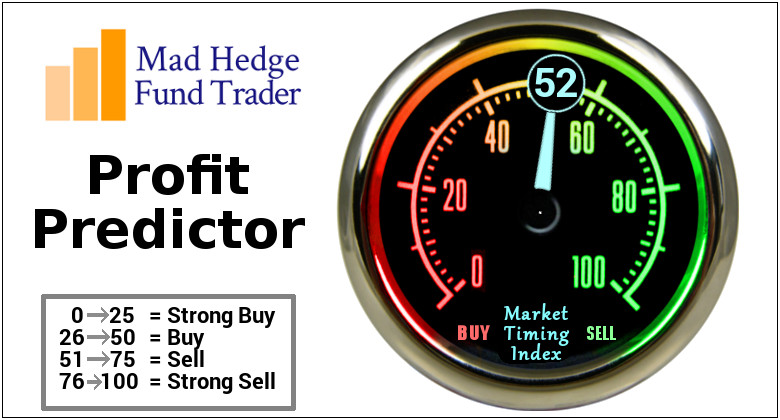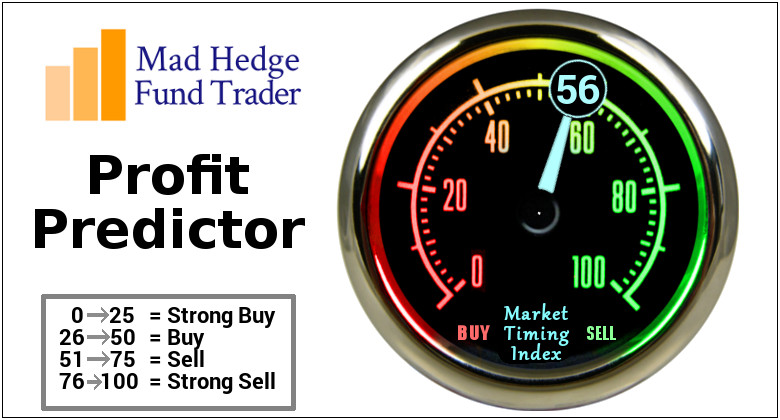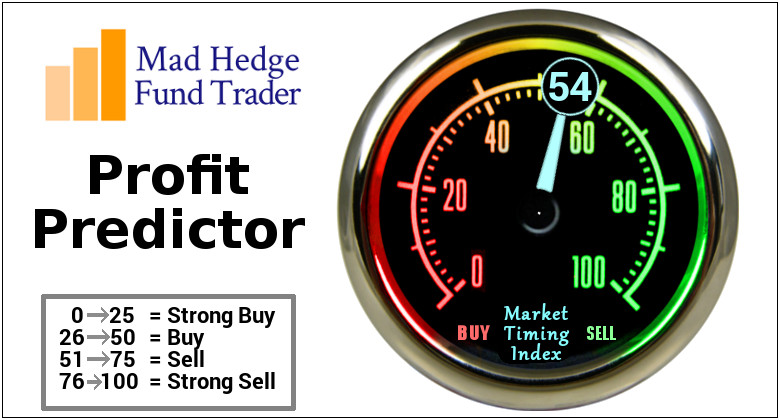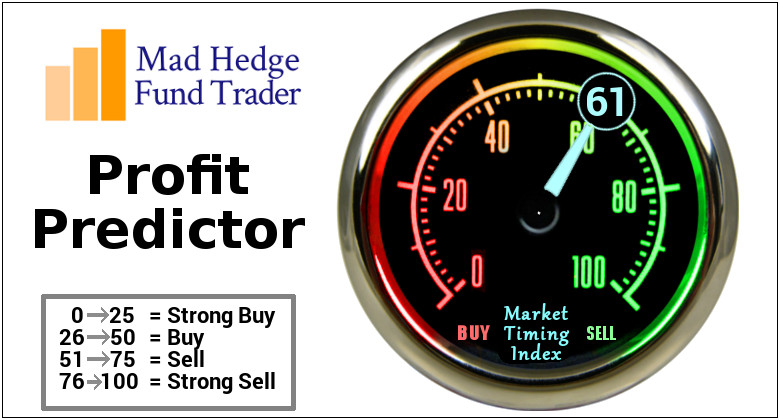Another week, another trade war.
The stock market did not take well the administration's escalation of international tensions by threatening to increase Chinese imports subject to punitive duties from $50 billion to $250 billion.
Today, it got much worse with our government now targeting French luxury goods, including wine, handbags, and Roquefort cheese.
Please! Anything but the Roquefort cheese!
In the meantime technicians are getting increasingly nervous about the market concentration. Take out the top-performing 15 stocks, such as big tech and Boeing (BA) and we are already in a bear market. Some 60% of S&P 500 stocks are below their 200-day moving averages and in solid downtrends.
One manager told me that a year from now we will be kicking ourselves for not selling, for all the signs to get out of Dodge were there.
In the meantime, I am hearing an alternative theory about technology stocks. The earnings growth is so prolific that they could continue to melt up for the rest of 2018. Indeed, Amazon (AMZN), Facebook (FB), Netflix (NFLX), and Salesforce (CRM) all hit new all-time highs this week.
Tech stocks are melting up because of blowout earnings expected in a month. After all, in this industry great quarters are followed by more great quarters.
By my calculation the shares prices of technology stocks have to double to bring their market capitalization of only 26% in line with their 50% share of the S&P 500 total earnings.
By the way, California now accounts for 19% of the U.S. population, 21% of U.S. GDP, but a staggering 35% of corporate profits, with two of four FANGs just spitting distance from my office.
Holy smokes! Are we seeing a replay of 1999, the notorious dot-com bubble top?
I hope not. Tech earnings multiples now average 25X compared to 100X back in the day. But this analysis does neatly fit in with my prediction that stocks top in the May-September 2019 time frame.
Last week also saw the shares of General Electric (GE) tossed on the ashcan of history, and the stock was taken out of the Dow Average, to be replaced by sedentary drug store Walgreens (WBA).
That's what a decade of lousy management gets you, which has vaporized a half trillion dollars of market capitalization since 2000. Back then, GE was the largest market cap company in the world, the equivalent of Apple (AAPL) today.
During this same time Apple created $900 billion in new market cap, the shares rocketing from $2.50 to $195. What a trade! Long Apple, short (GE) for 18 years.
As for Apple, it is unique among the FANGs in having the biggest exposure to China. It employs 1 million there, sells more iPhones in the Middle Kingdom than in the U.S., and is crucial to the company's long-term growth plans. The rest of the FANGs have virtually NO China exposure.
This realization caused me to stop out of my position in Apple shares for a loss during its $12 plunge off its all-time high at $195. That brought my 2018 year-to-date performance down to 24.91% and my 8 1/2 year return to 301.38%.
Fortunately, aggressive longs in Amazon, Salesforce, Microsoft, and the iShares Nasdaq Biotechnology ETF (IBB) still have me up +4.54% in June, my 12th consecutive positive month.
This coming week will be all about the May real estate and housing data, which we already know will be hotter than a pistol.
On Monday, June 25, at 10:00 AM, May New Home Sales are out.
On Tuesday, June 26, at 9:00 AM, the S&P CoreLogic Case-Shiller National Home Price Index for April is released. May Consumer Confidence is out at 10:00 AM.
On Wednesday, June 27, at 8:30 AM, May Durable Goods is published. May Pending Home Sales are out at 10:00 AM.
Thursday, June 28, leads with the Weekly Jobless Claims at 8:30 AM EST, which saw a fall of 3,000 last week to 218,000. Also announced is another read on US Q1 GDP. The last report came in at a moderate 2.2%.
On Friday, June 29, at 9:45 AM EST, we get the May Chicago Purchasing Managers Index. Then the Baker Hughes Rig Count is announced at 1:00 PM EST.
As for me, I will be headed to Los Angeles for my one beach weekend this year. Got to keep those body surfing skills finely tuned, and I'll have a chance to work on my tan before going to sea for a week in July.
In California it's all about the tan.
Good Luck and Good Trading.




























